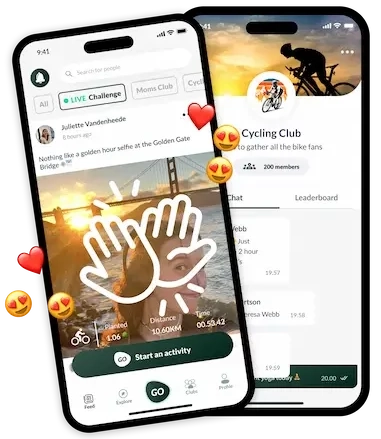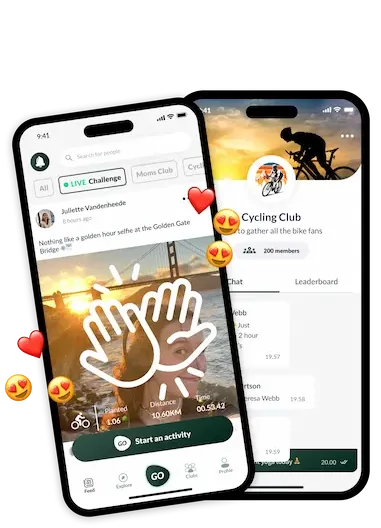If you’ve found yourself scrolling through LinkedIn or TikTok recently, it’s likely you’ve come across the polarizing term “quiet quitting.” Brought to the masses from a TikTok trend, disengaged young professionals in the workforce have decided to break their silence on how they’re really feeling about work… and it shouldn’t be ignored.
What is quiet quitting?
Quiet quitting is a term some workers are using to describe doing only the bare minimum at their jobs – nothing more, nothing less. Those who practice quiet quitting don’t believe in working during the evening or on the weekend, and they don’t go above and beyond at work in hopes of getting promoted.
This trend started when young professionals began coming to the realization that they’ve been compromising the quality of their lives for employers that don’t seem to care about them. These employees are disengaged, tired, burnt out, stressed, and ready to make a change for their mental and physical well-being – and they want the world to know about it.
Here’s how research predicted quiet quitting
The research on employee well-being, engagement, and retention has been very clear – and it’s not looking good for anyone. Before the term quiet quitting rose to popularity, the workforce was already being hit by the “Great Resignation.”
The Great Resignation started in late 2020, a trend representing a higher than normal amount of employees voluntarily resigning from their jobs. For example, an average of four million employees per month quit their jobs in 2021… half a million more per month than it was in 2019.
It’s not showing any signs of stopping.
A study by Microsoft shows that 52% of Gen Z and Millennial workers are likely to consider changing employers in 2022, up 3% from the previous year.
When it comes to employee well-being, reports are showing the tremendous toll the past few years have had on workers across the globe. Mental health is at an all-time low, with 31% of employees reporting that their mental health has declined over the past year – up 24% from the end of 2020.
Burnout rates aren’t looking any better. Recent research shows a correlation between burnout rates in the younger generations, take a look:
To top it off, 36% of workers believe their organizations have nothing in place to prevent burnout.
Combined, this research shows the clear path that has led to the quiet quitting trend, but it’s not too late to turn it around.
How can I prevent quiet quitting?
For organizations, quiet quitting should be a wake up call that the health and well-being of employees is essential. Without it, your business can suffer. The key to preventing quiet quitting is clear: communicate with employees, listen to them, and promote work-life balance.
1. Communicate
Did you know most conflicts at work arise due to ineffective communication?
Start by communicating openly and honestly with your team. What is it they’re looking for? How can you help improve their work experience? Open communication can do wonders for employee engagement – and when it’s practiced, research shows employees are more likely to succeed.
When surveyed, 86% of employees and executives cited lack of effective collaboration and communication as the main causes for workplace failures.
Building a culture of open communication means allowing your team to have honest conversations about how they’re feeling at work. Listen to them and take measures to adapt your policies and initiatives so your team stays happy and productive.
2. Listen
If your employees express concern, listen to them. The best thing you can do is try to see things from their perspective, without brushing off how they’re feeling.
Follow these 3 steps when listening to your team:
• Hear their concerns
• Take action
• Follow up with them
Remember, listening is just the first step. Taking action and following up completes the process of truly listening to them. Even if you can’t always meet their needs, it’s still important to address their concerns.
3. Balance
Many employees taking part in the quiet quitting movement state wanting more of a balance between work and life. Research has found that employees with good work-life balance, compared to their counterparts, are more productive and less likely to get burnt out.
33% of employees who have a good work-life balance say they plan to stay in their current jobs.
As an organization, taking the following measures to make this balance part of your company culture can make all the difference:
• Flexible scheduling
Many employees cite flexible scheduling as a reason they would stay with a job, and the stats prove it. 89% of companies report better retention rates because of their flexible work options. Even allowing your team to work from home one day a week could make a huge difference.
• Encourage time off
In America, 61.3% of employees feel guilty about taking time off. Try making an effort to encourage your team to take some time off when it’s needed!
What is the 8:8:8 rule? 8 hours of work, 8 hours of sleep, and 8 hours of free time in a day. While you can’t just force your team to live by these standards, talking to them and encouraging it can be a step in the right direction. This is the ultimate work-life balance!
We are here to support you and your team
Now more than ever, employee well-being initiatives are crucial.
When Gallup asked employees what they look for most in an employer, employees of all generations ranked working for an organization that cares about their well-being as part of their top three criteria. For Millennials and Generation Z, workplace well-being was their number one answer.
Listening to the data will tell you one thing for certain – workplace well-being is what modern-day employees want.
If you want to get started on the right track, we’ve designed a transformative holistic well-being platform for employees with a focus on reporting capabilities, allowing you to gather and share the data you need.
With gamified activities designed to encourage employees to take action for their well-being, offering our platform helps you show your team that you do truly care about them, from the inside out.
Access to daily well-being surveys, community challenges, individual achievements, wellness videos and more, will leave your employees feeling happier, healthier, engaged, and productive.
Company engagement has never been easier. To learn more about our platform, click the link below.
You won’t regret it!
Written by Kelly Baker, Content Marketing at teroGO
This website stores cookies on your computer. These cookies are used to collect information about how you interact with our website and allows us to remember you. We use this information in order to improve and customize your browsing experience and for analytics and metrics about our visitors both on this website and other media. To find out more about the cookies we use, please see our Informativa sulla privacy.
Get a 15 minute live demo
Get your corporate challenge or employee wellbeing program live and empower your team’s wellness journey.




















